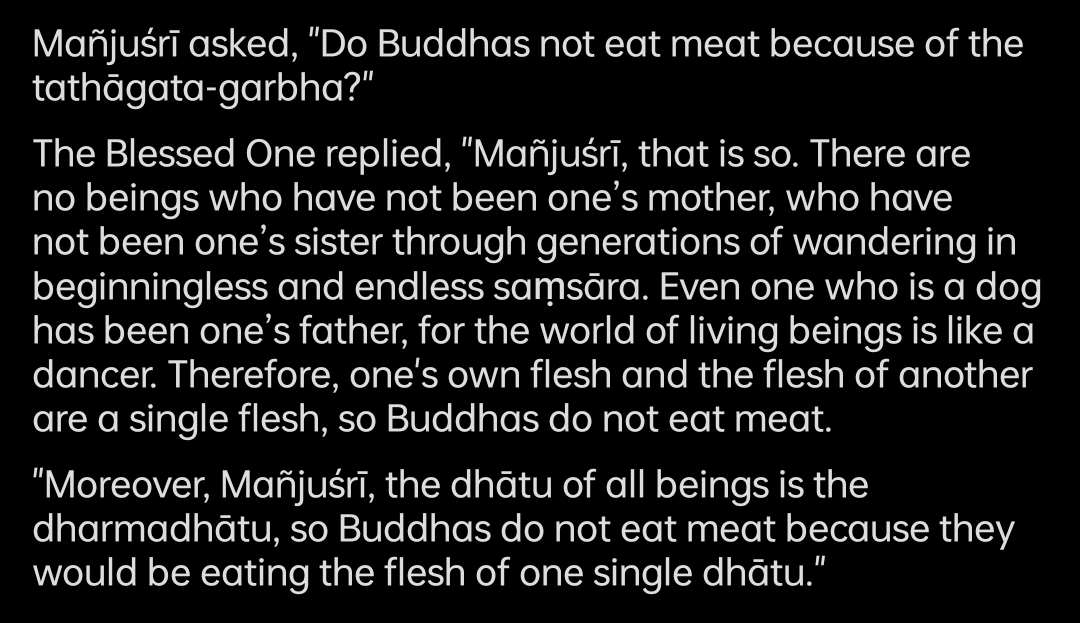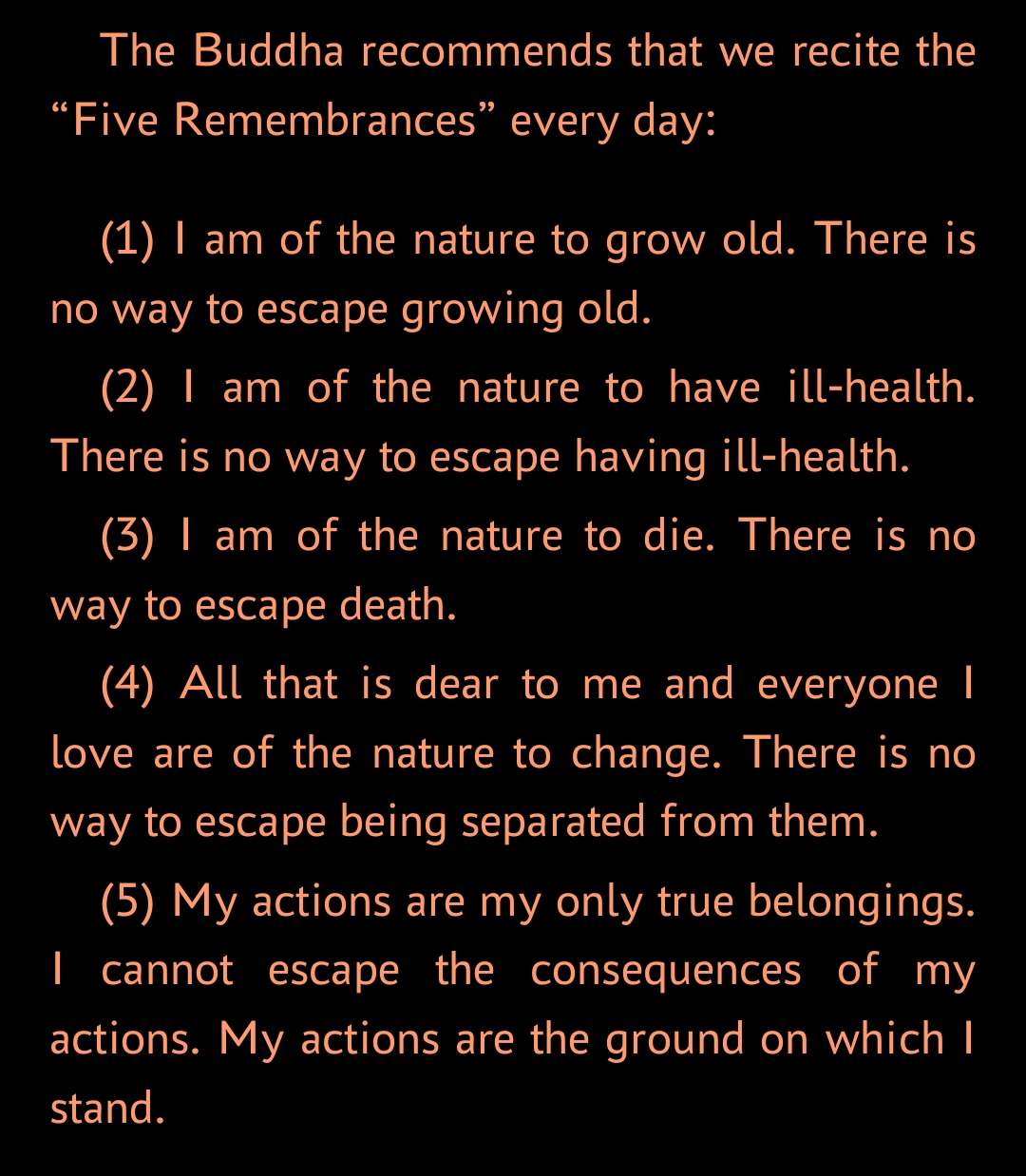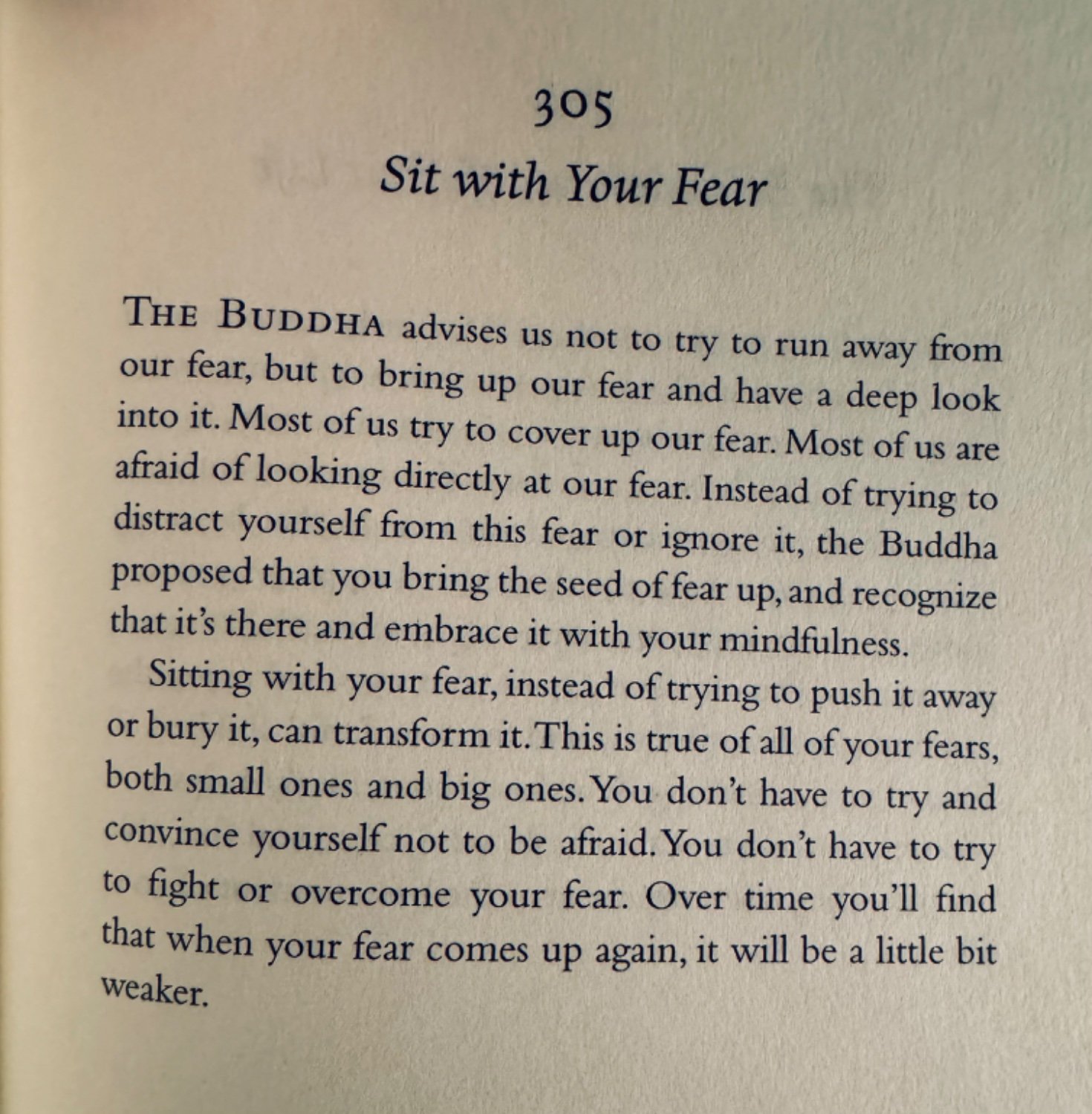Under the New Moon's quiet essence,
let hearts be filled with gentleness,
guiding all beings towards peace,
fostering paths to happiness and unity,
may we renew our intentions for love and understanding anew
Related Teachings:

Paṁsudhovakasutta—Bhikkhu Sujato
Meditation is like purifying gold. A meditator should progressively eliminate more refined corruptions.
“Gold has coarse corruptions: sand, soil, and gravel. A panner or their apprentice pours it into a pan, where they wash, rinse, and clean it. When that’s been eliminated, there are medium corruptions in the gold: fine grit and coarse sand. The panner washes it again. When that’s been eliminated, there are fine corruptions in the gold: fine sand and black grime. The panner washes it again. When that’s been eliminated, only gold dust is left. A goldsmith or their apprentice places the gold in a crucible where they blow, melt, and smelt it. Still the gold is not settled and the dross is not totally gone. It’s not pliable, workable, or radiant, but is brittle and not completely ready for working. But the goldsmith keeps on blowing, melting, and smelting it. The gold becomes pliable, workable, and radiant, not brittle, and ready to be worked. Then the goldsmith can successfully create any kind of ornament they want, whether a bracelet, earrings, a necklace, or a golden garland.
In the same way, a mendicant who is committed to the higher mind has coarse corruptions: bad bodily, verbal, and mental conduct. A sincere, capable mendicant gives these up, gets rid of, eliminates, and obliterates them.
When they’ve been given up and eliminated, there are middling corruptions: sensual, malicious, or cruel thoughts. A sincere, capable mendicant gives these up, gets rid of, eliminates, and obliterates them.
When they’ve been given up and eliminated, there are fine corruptions: thoughts of family, country, and being looked up to. A sincere, capable mendicant gives these up, gets rid of, eliminates, and obliterates them.
When they’ve been given up and eliminated, only thoughts about the teaching are left. That immersion is not peaceful or sublime or tranquil or unified, but is held in place by forceful suppression.
But there comes a time when that mind is stilled internally; it settles, unifies, and becomes immersed in samādhi. That immersion is peaceful and sublime and tranquil and unified, not held in place by forceful suppression. They become capable of realizing anything that can be realized by insight to which they extend the mind, in each and every case.
If they wish: ‘May I wield the many kinds of psychic power: multiplying myself and becoming one again; appearing and disappearing; going unimpeded through a wall, a rampart, or a mountain as if through space; diving in and out of the earth as if it were water; walking on water as if it were earth; flying cross-legged through the sky like a bird; touching and stroking with my hand the sun and moon, so mighty and powerful; controlling my body as far as the Brahmā realm.’ They are capable of realizing it, in each and every case.
If they wish: ‘With clairaudience that is purified and superhuman, may I hear both kinds of sounds, human and divine, whether near or far.’ They are capable of realizing it, in each and every case.
If they wish: ‘May I understand the minds of other beings and individuals, having comprehended them with my mind. May I understand mind with greed as “mind with greed”, and mind without greed as “mind without greed”; mind with hate as “mind with hate”, and mind without hate as “mind without hate”; mind with delusion as “mind with delusion”, and mind without delusion as “mind without delusion”; constricted mind as “constricted mind”, and scattered mind as “scattered mind”; expansive mind as “expansive mind”, and unexpansive mind as “unexpansive mind”; mind that is not supreme as “mind that is not supreme”, and mind that is supreme as “mind that is supreme”; mind immersed in samādhi as “mind immersed in samādhi”, and mind not immersed in samādhi as “mind not immersed in samādhi”; freed mind as “freed mind”, and unfreed mind as “unfreed mind”.’ They are capable of realizing it, in each and every case.
If they wish: ‘May I recollect many kinds of past lives. That is: one, two, three, four, five, ten, twenty, thirty, forty, fifty, a hundred, a thousand, a hundred thousand rebirths; many eons of the world contracting, many eons of the world expanding, many eons of the world contracting and expanding. May I remember: “There, I was named this, my clan was that, I looked like this, and that was my food. This was how I felt pleasure and pain, and that was how my life ended. When I passed away from that place I was reborn somewhere else. There, too, I was named this, my clan was that, I looked like this, and that was my food. This was how I felt pleasure and pain, and that was how my life ended. When I passed away from that place I was reborn here.” May I recollect my many past lives, with features and details.’ They are capable of realizing it, in each and every case.
If they wish: ‘With clairvoyance that is purified and superhuman, may I see sentient beings passing away and being reborn—inferior and superior, beautiful and ugly, in a good place or a bad place—and understand how sentient beings are reborn according to their deeds: “These dear beings did bad things by way of body, speech, and mind. They spoke ill of the noble ones; they had wrong view; and they acted out of that wrong view. When their body breaks up, after death, they’re reborn in a place of loss, a bad place, the underworld, hell. These dear beings, however, did good things by way of body, speech, and mind. They never spoke ill of the noble ones; they had right view; and they acted out of that right view. When their body breaks up, after death, they’re reborn in a good place, a heavenly realm.” And so, with clairvoyance that is purified and superhuman, may I see sentient beings passing away and being reborn—inferior and superior, beautiful and ugly, in a good place or a bad place. And may I understand how sentient beings are reborn according to their deeds.’ They are capable of realizing it, in each and every case.
If they wish: ‘May I realize the undefiled freedom of heart and freedom by wisdom in this very life, and live having realized it with my own insight due to the ending of defilements.’ They are capable of realizing it, in each and every case.”
The Buddha is sharing on the method of cultivating the mind with an analogy of refining gold by describing progressively steps.
- Abandoning of bad conduct by way of body, speech and mind to adopt ethical conduct and follow precepts (coarse corruptions)
- Abandoning of sensual, malicious and cruel thoughts (middling corruptions)
- Abandoning thoughts of family, country, and being looked up to (fine corruptions)
He also shares on the insights a mind freed from these can attain to, the highest of these being the three true knowledges that he gained on the night of his enlightenment. Each insight progressively shared towards the end is a higher fruit than the one before. Not every enlightened being will opt for cultivating all of these insights, they are shared by the Buddha so if one comes across such insights in other traditions or in their own meditations, they can maintain steadiness of the mind by knowing the importance of each and not get caught up. All enlightened beings will have realised the last insight, the undefiled freedom of heart and freedom by wisdom, an ending of suffering and future rebirths.
Related Teachings:
- Navigating through 30 mental qualities that lead to enlightenment, to the arising of the Buddha (AN 10.76) - The Buddha shares 30 mental qualities to uproot and their anti-dotes to cultivate in ten pairs of threes. This teaching can be used to see the next layer of qualities one can uproot and its antidote qualities to be cultivated.
- The Realization of the Three True Knowledges ↗️ - The Buddha shares on the three knowledges he gained on the night of his enlightenment. They refer to the last three parts of this teaching: 1.) seeing one's past lives, 2.) seeing beings arise and pass away in accordance with their kamma, 3.) realising the freedom from the defilements through wisdom from greed, hate, delusion that lead to rebirth.
- Steadying the mind against the poisons of greed, hate and delusion (AN 4.117) - A teaching on the three poisons of the mind that lead to rebirth, and intoxication which prevents understanding the causes of greed, hate, and delusion
- Tracing the causes of ignorance | delusion | avijjā sutta (AN 10.61) - Tracing the dependent causes of what leads to ignorance and what leads to wisdom.

A new student of the Buddha asked him once if the path of enlightenment can be described in a way where there is gradual progress, much like other professions where one progress through skill levels to eventually become proficient.
As the Buddha shares in this teaching, the whole of the path is one in which there is gradual training, gradual practice and gradual progress.
The sequential training steps that the Buddha guides a new student joining in his tradition are:
- Practice of moral conduct: The Buddha provides guidance to the household practitioners to implement the five precepts (eight precepts for the ordained practitioners).
‘Come, mendicant, be ethical and restrained in the monastic code, conducting yourself well and seeking alms in suitable places. Seeing danger in the slightest fault, keep the rules you’ve undertaken.’
Guide on cultivation of ethics for a lay practitioner (from DN 31)
- Practice of sense restraint: The Buddha advises to guarding the sense-doors.
When they have ethical conduct, the Realized One guides them further: ‘Come, mendicant, guard your sense doors. When you see a sight with your eyes, don’t get caught up in the features and details. If the faculty of sight were left unrestrained, bad unskillful qualities of covetousness and displeasure would become overwhelming. For this reason, practice restraint, protect the faculty of sight, and achieve restraint over it. When you hear a sound with your ears … When you smell an odor with your nose … When you taste a flavor with your tongue … When you feel a touch with your body … When you know an idea with your mind, don’t get caught up in the features and details. If the faculty of mind were left unrestrained, bad unskillful qualities of covetousness and displeasure would become overwhelming. For this reason, practice restraint, protect the faculty of mind, and achieve its restraint.’
- Eating in moderation: The Buddha advises to eat only to nourish the body, not for taking delight, and not in excess.
He advises against eating food to comfort difficult emotions.When they guard their sense doors, the Realized One guides them further: ‘Come, mendicant, eat in moderation. Reflect rationally on the food that you eat: ‘Not for fun, indulgence, adornment, or decoration, but only to sustain this body, to avoid harm, and to support spiritual practice. In this way, I shall put an end to old discomfort and not give rise to new discomfort, and I will live blamelessly and at ease.’
- Be committed to wakefulness: The Buddha then advises the student to practise wakefulness of the mind. He recommends on a combined practise of walking, sitting meditation along with lying down in the lion's posture in the night.
When they eat in moderation, the Realized One guides them further: ‘Come, mendicant, be committed to wakefulness. Practice walking and sitting meditation by day, purifying your mind from obstacles. In the evening, continue to practice walking and sitting meditation. In the middle of the night, lie down in the lion’s posture—on the right side, placing one foot on top of the other—mindful and aware, and focused on the time of getting up. In the last part of the night, get up and continue to practice walking and sitting meditation, purifying your mind from obstacles.’
- Be committed to situational awareness: The Buddha then advises the student to train the awareness of mind.
When they are committed to wakefulness, the Realized One guides them further: ‘Come, mendicant, have mindfulness and situational awareness. Act with situational awareness when going out and coming back; when looking ahead and aside; when bending and extending the limbs; when bearing the outer robe, bowl and robes; when eating, drinking, chewing, and tasting; when urinating and defecating; when walking, standing, sitting, sleeping, waking, speaking, and keeping silent.’
- Cultivation of samadhis, absorptions, jhanas: The Buddha then advises the students to practise cultivation of the absorptions by going into seclusion.
When they have mindfulness and situational awareness, the Realized One guides them further: ‘Come, mendicant, frequent a secluded lodging—a wilderness, the root of a tree, a hill, a ravine, a mountain cave, a charnel ground, a forest, the open air, a heap of straw.’ And they do so.Here, he then further advises them on how to give up the five hindrances and attain to the jhanas, and then attain to the states of enlightenment.
Notice the guidance of the Buddha is on doing one thing-at-a-time. Modern research shows that a continued practise of a new habit for 25 days to be effective in creating a reflexive memory of it, and also that building of new habits should be practised one at a time. Read more on the science of habits ↗️
Also notice that the Buddha doesn't ask for perfection. As cultivation of each subsequent state also purifies the previous steps. So one needs to implement each step to the best of their ability while seeking guidance from a teacher as required. There is a positive reinforcement cycle that one should observe in the condition of mind being improved all the time as they practise the teachings of the Buddha.
The Buddha advises a balance of dedicated effort while also staying relaxed, an analogy he gives through how the strings of lute should be neither too tight nor too lose for playing good music. In the same way, mind is best trained by maintaining a balance of energy and relaxation (excess leads to restlessness, and too little leads to laziness).
You can read the full teaching over here: https://suttacentral.net/mn107

Mind precedes all mental states.
Mind is their chief;
they are all mind-wrought.
If with a pure mind a person
speaks or acts happiness follows him
like his never-departing shadow.
- DhammaPada Verse 2
Related Teachings:
- Two classes of thoughts and the four right efforts ↗️ - The Buddha shares insights on the mind's workings and how one can choose to cultivate the mind's landscape
- Intention shapes all phenomena ↗️ - Understanding kamma in brief
- Eight harmful and beneficial qualities ↗️ - Qualities that lead to decline and to growth in both secular and spiritual domains
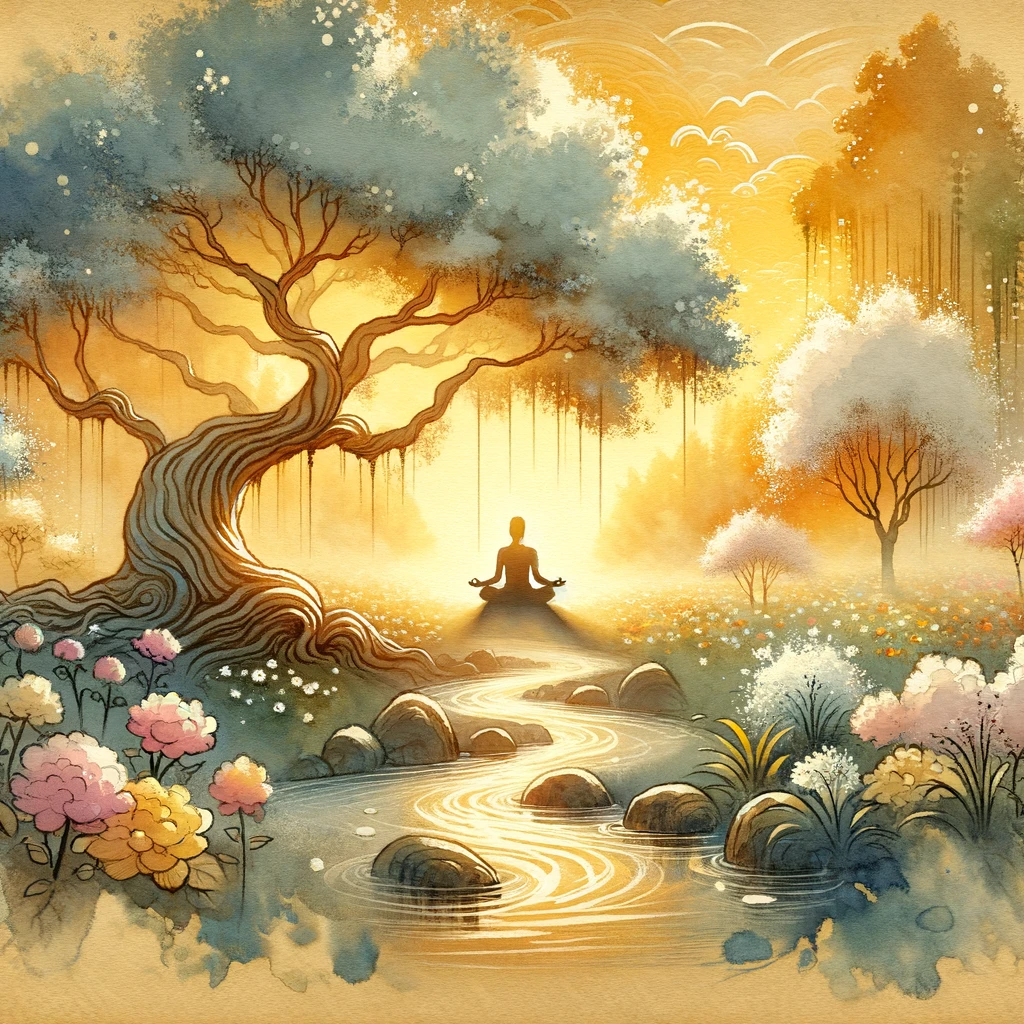
This wonderful art is from Alex Jenkins: https://twitter.com/AlexJenkinsArt/status/1750174065954811930
In the turning wheel's first noble fold,
Lies the truth of discontentment told.
With eyes that see beyond the veil,
We discern the unsatisfactory trail.
The mind, a canvas, dark and vast,
Where shadows of attachment are cast.
Through insight's lens, clear and keen,
We see the end of suffering's scene.
This is an inspired verse with a message of making an effort to cultivate the right view: to reflect on the discontentment in form, feelings, perceptions, choices and consciousness as one interacts with the world.
Related teachings:
- Gradual training, gradual practice and gradual progress - This is the practice outline that the Buddha shares with his students which enables them to cultivate the third eye through the immersions known as jhānas. It is through the clarity of this third eye that one can clearly see the four noble truths.
- The characteristic of Not-self - This is the way to reflect when one is in jhānas to awaken to the truth of enlightenment. This can also be done outside of jhānas as one is interacting with the world or reading the Buddha's teachings and as there is an observation of grasping towards objects, a tug / a pull of the mind, one can reflect on the three characteristics of impermanence, not-self and discontentment to let go of the mind's pull, to let go of the grasping.
Reposted from https://lemmy.world/c/buddhadhamma.
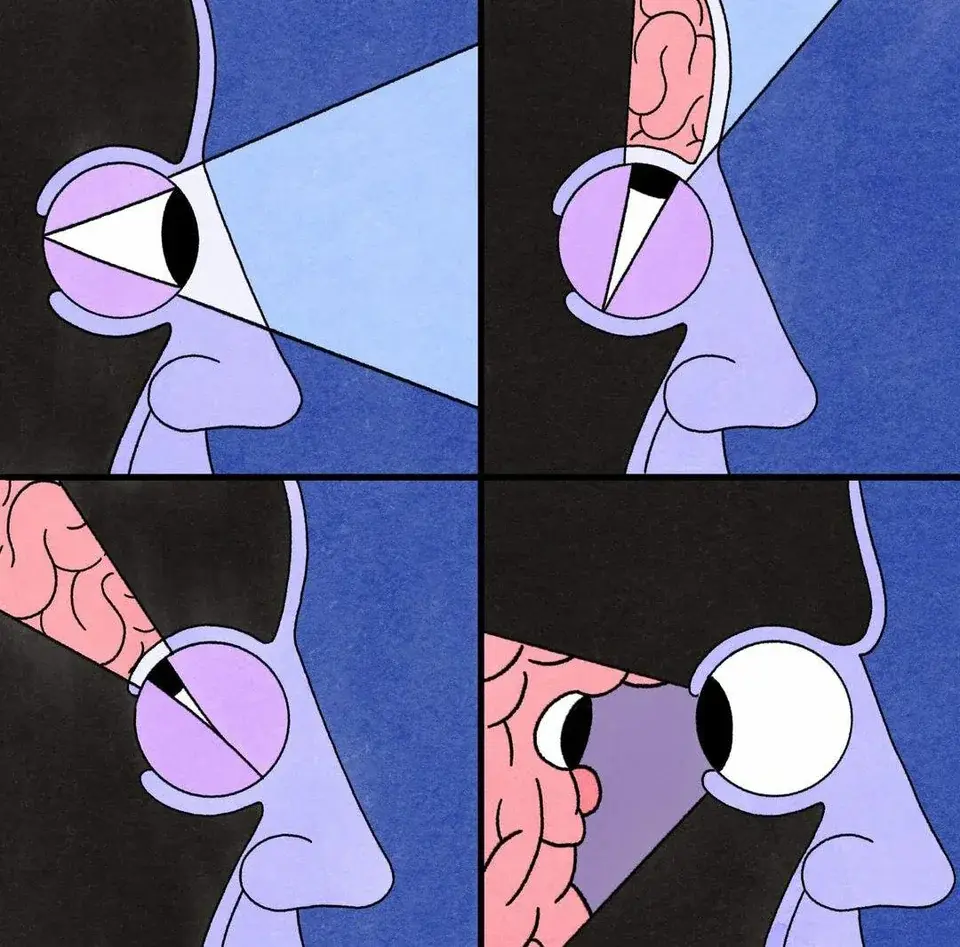
26 Sovereign of the Five Elements
EACH ONE OF US is sovereign over the territory of our own being and the five elements (Sanskrit: skandhas) we are made of. These elements are form (body), feelings, perceptions, mental formations, and consciousness. Our practice is to look deeply into these five elements and discover the true nature of our being the true nature of our suffering, our happiness, our peace, our fearlessness.
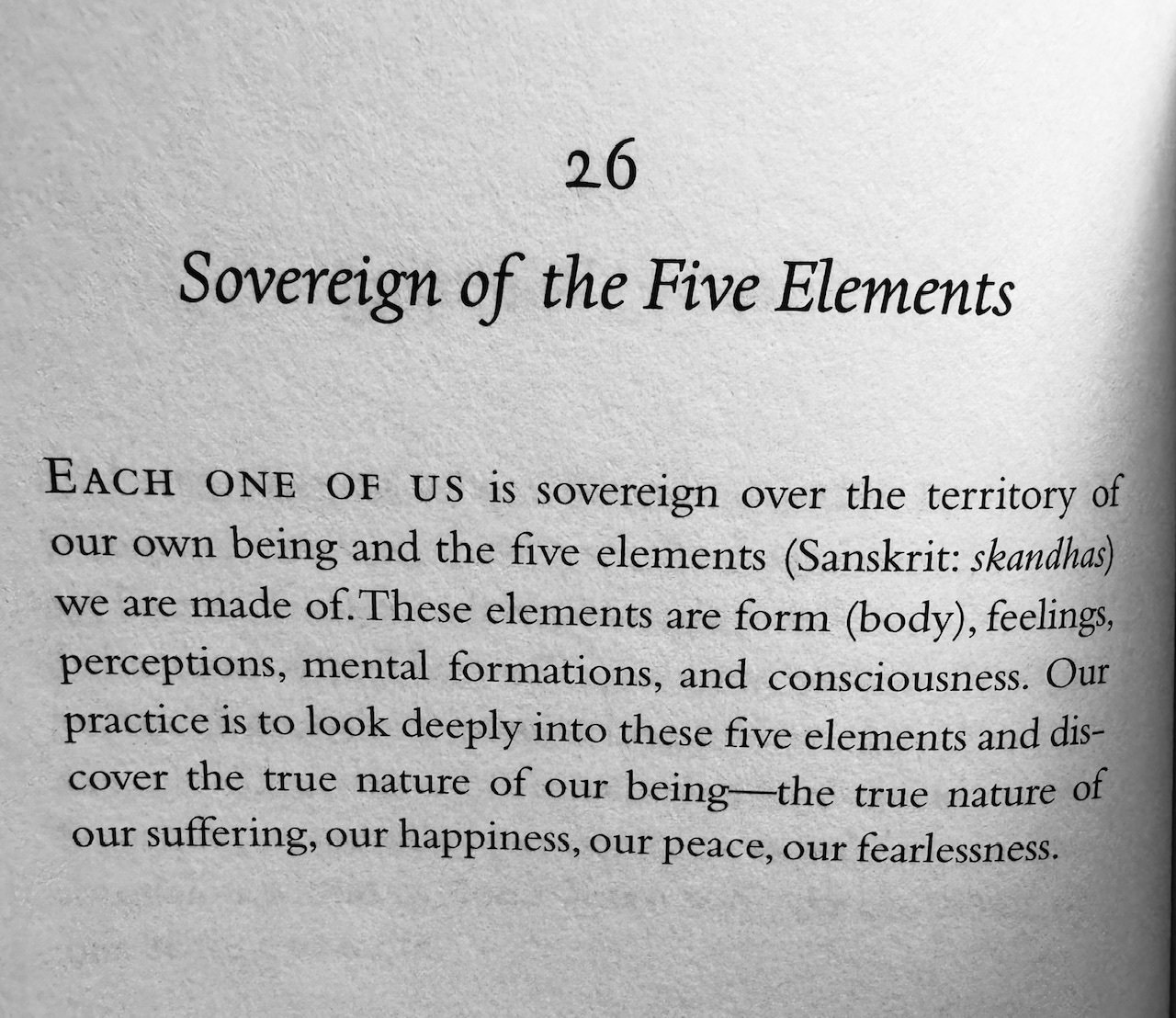
cross-posted from: https://lemmy.world/post/11106502
“Mendicants, a farmer has three urgent duties. What three? A farmer swiftly makes sure the field is well ploughed and tilled. Next they swiftly plant seeds in season. When the time is right, they swiftly irrigate or drain the field. These are the three urgent duties of a farmer. That farmer has no special power or ability to say: ‘Let the crops germinate today! Let them flower tomorrow! Let them ripen the day after!’ But there comes a time when that farmer’s crops germinate, flower, and ripen as the seasons change.
In the same way, a mendicant has three urgent duties. What three? Undertaking the training in the higher ethics, the higher mind, and the higher wisdom. These are the three urgent duties of a mendicant. That mendicant has no special power or ability to say: ‘Let my mind be freed from defilements by not grasping today! Or tomorrow! Or the day after!’ But there comes a time—as that mendicant trains in the higher ethics, the higher mind, and the higher wisdom—that their mind is freed from defilements by not grasping.
So you should train like this: ‘We will have keen enthusiasm for undertaking the training in the higher ethics, the higher mind, and the higher wisdom.’ That’s how you should train.”
The Buddha is sharing a teaching guideline here that there is no instant enlightenment. Such thoughts are the mind operating by grasping and craving, the opposite of training per the Buddha's teaching guidelines.
Rather, one trains diligently in the training of the higher ethics (purification of mind), higher mind (concentration, jhānas, samādhi) and higher wisdom cultivation. As one does this, they're gradually freed from the defilements by not grasping.
Related teachings:

Section V. The Way to a Fortunate Rebirth

The Buddha likens sentient beings to lotus flowers in various stages of growth within a pond. Some, like lotuses near the surface, are capable of awakening quickly through exposure to his teachings. However, most people are like lotuses deep underwater. They benefit from the teachings (likened to sunlight) and need time to mature and attain realization, often over many lifetimes. This spiritual journey requires cultivating wholesome qualities and avoiding rebirth in realms of misfortune, instead seeking rebirths conducive to further spiritual progress.
The Buddha explains that our actions (kamma, or karma) significantly influence this process. Kamma refers to intentional actions driven by volition, which can manifest mentally, verbally, or physically. These actions, whether good or bad, create potential for corresponding results (vipāka) or fruits (phala) to arise in this life or future lives, governed by the ethical nature of the actions.
- The Law of Kamma
- Four Kinds of Kamma (AN 4.232)
- Why Beings Fare as They Do after Death (MN 41)
- Kamma and Its Fruits (MN 135)
- Merit. The Key to Good Fortune
- Giving
- Moral Discipline
- Meditation
- The Development of Loving-Kindness (It 27)
- The Four Divine Abodes (from MN 99)
- Insight Surpasses All (AN 9.20, abridged)
This is the fifth section of: In the Buddha’s Words: An Anthology of Discourses from the Pali Canon by Bhikkhu Bodhi, published by Wisdom Publications, but linked to the free translations available on SuttaCentral.net.
If you've enjoyed these and would like to purchase the print or e-book versions, you can do so here: https://wisdomexperience.org/product/buddhas-words/.

I9 Flowers and Garbage
FLOWERS AND GARBAGE are both organic in nature.
So looking deeply into the nature of a flower, you can see the presence of the compost and the garbage. The flower is also going to turn into garbage, but don't be afraid! You are a gardener, and you have in your hands the power to transform garbage into flowers, into fruit, into vegetables. You don't throw anything away, because you are not afraid of garbage. Your hands are capable of transforming it into lowers, or lettuce, or cucumbers.
The same thing is true of your happiness and your sor-row. Sorrow, fear, and depression are all a kind of garbage. These bits of garbage are part of real life, and we must look deeply into their nature. You can practice in order to turn these bits of garbage into flowers. It is not only your love that is organic; your hate is, too. So you should not throw anything out. All you have to do is learn how to transform your garbage into flowers.
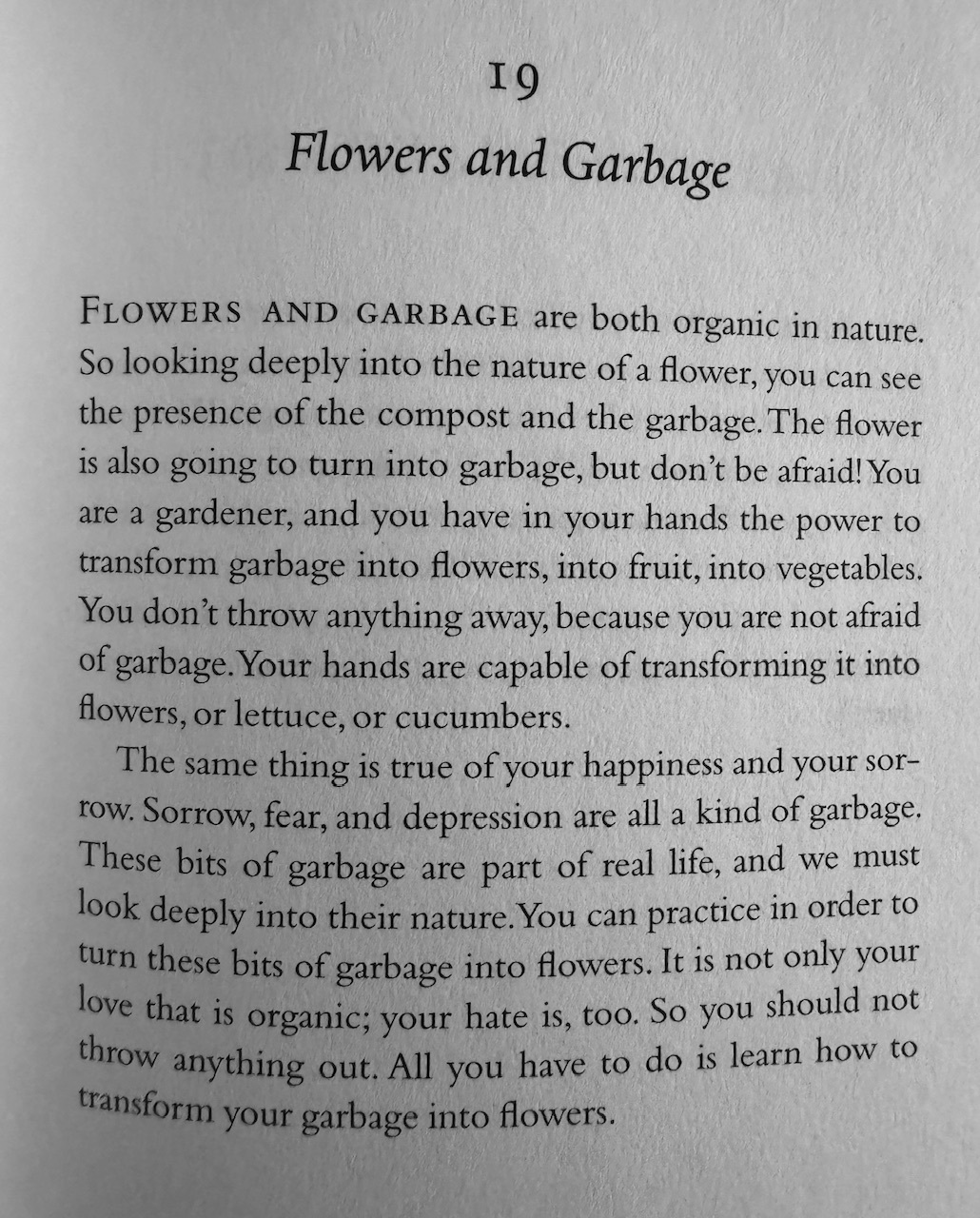
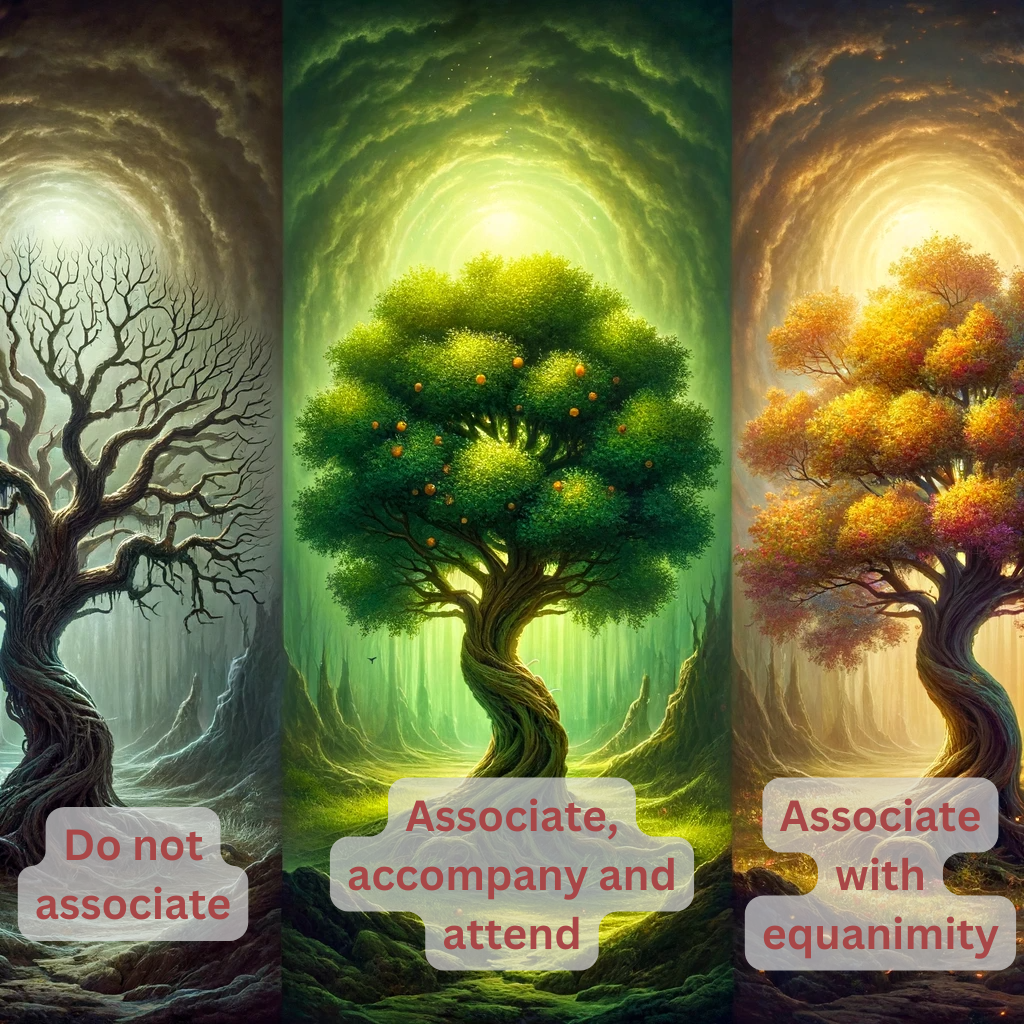
“These three people are found in the world. What three? There is a person who you should be disgusted by, and you shouldn’t associate with, accompany, or attend them. There is a person you should regard with equanimity, and you shouldn’t associate with, accompany, or attend them. There is a person you should associate with, accompany, and attend.
Who is the person you should be disgusted by, and not associate with, accompany, or attend? It’s a person who is unethical, of bad qualities, filthy, with suspicious behavior, underhand, no true ascetic or spiritual practitioner—though claiming to be one—rotten inside, corrupt, and depraved. You should be disgusted by such a person, and you shouldn’t associate with, accompany, or attend them. Why is that? Even if you don’t follow the example of such a person, you still get a bad reputation: ‘That individual has bad friends, companions, and associates.’ They’re like a snake that’s been living in a pile of dung. Even if it doesn’t bite, it’ll still rub off on you. In the same way, even if you don’t follow the example of such a person, you still get a bad reputation: ‘That individual has bad friends, companions, and associates.’ That’s why you should be disgusted by such a person, and you shouldn’t associate with, accompany, or attend them.
Who is the person you should regard with equanimity, and not associate with, accompany, or attend? It’s a person who is irritable and bad-tempered. Even when lightly criticized they lose their temper, becoming annoyed, hostile, and hard-hearted, and they display annoyance, hate, and bitterness. They’re like a festering sore, which, when you hit it with a stick or a stone, discharges even more. In the same way, someone is irritable and bad-tempered. They’re like a firebrand of pale-moon ebony, which, when you hit it with a stick or a stone, sizzles and crackles even more. In the same way, someone is irritable and bad-tempered. They’re like a sewer, which, when you stir it with a stick or a stone, stinks even more. In the same way, someone is irritable and bad-tempered. Even when lightly criticized they lose their temper, becoming annoyed, hostile, and hard-hearted, and they display annoyance, hate, and bitterness. You should regard such a person with equanimity, and you shouldn’t associate with, accompany, or attend them. Why is that? Thinking, ‘They might abuse or insult me, or do me harm.’ That’s why you should regard such a person with equanimity, and you shouldn’t associate with, accompany, or attend them.
Who is the person you should associate with, accompany, and attend? It’s someone who is ethical, of good character. You should associate with, accompany, and attend such a person. Why is that? Even if you don’t follow the example of such a person, you still get a good reputation: ‘That individual has good friends, companions, and associates.’ That’s why you should associate with, accompany, and attend such a person.
These are the three people found in the world.
A man who associates with an inferior goes downhill,but associating with an equal, you’ll never decline;following the best, you’ll quickly rise up,so you should keep companywith people better than you.”
The Buddha shares guideline on choosing one's associations and company. For it is through associations that one can decline, avoid decline or grow in qualities.
- By associating with a person who is unethical, one is giving rise to the same qualities, leading to decline.
- By associating with a person of bad temper, with ill-ill, one is giving rise to similar qualities, leading to decline.
- By associating with a person who is ethical, one is giving rise to similar qualities in oneself, leading to their growth, not decline.
Related teachings:
- Teachings on the eight harmful and beneficial qualities (external link)
- Another discourse on who to associate with
- Factors to cultivate faith (association with wise is one of the four factors) (external link)
- Moral law of attraction (external link)
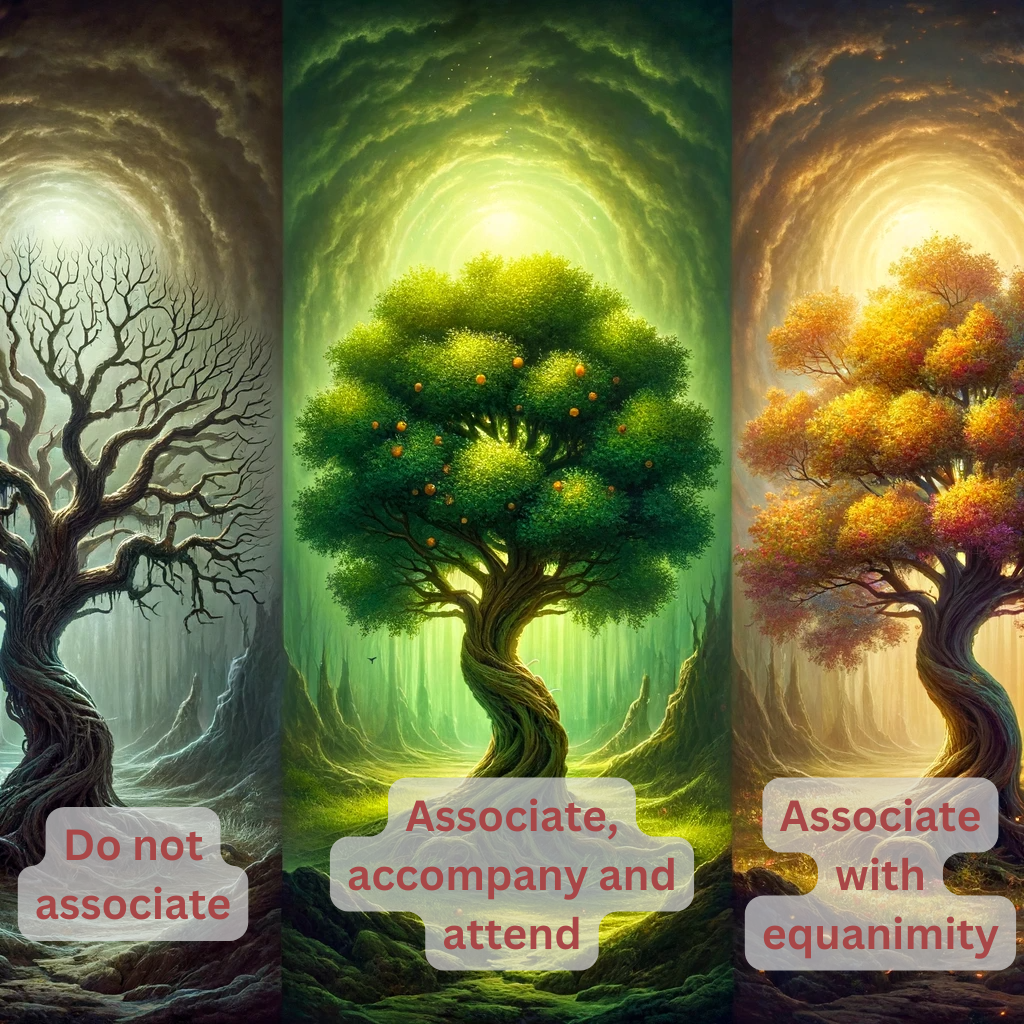

Not the sweet smell of flowers,
not even the fragrance of sandal, tagara, or jasmine
blows against the wind.
But the fragrance of the virtuous blows against the wind.
Truly the virtuous man pervades all directions
with the fragrance of his virtue.
- DhammaPada verse 54
The Buddha shares the cultivation of virtue and purification of ethical conduct as the foremost practice to his students for progressing on the path to enlightenment. Read on the training guidelines for the entire path (external link).
Read this teaching on six directions for how lay practitioners should be cultivating virtue.
Read this teaching on the cultivation of seven kinds of wealth (external link).
Originally posted in: https://lemmy.world/c/buddhadhamma
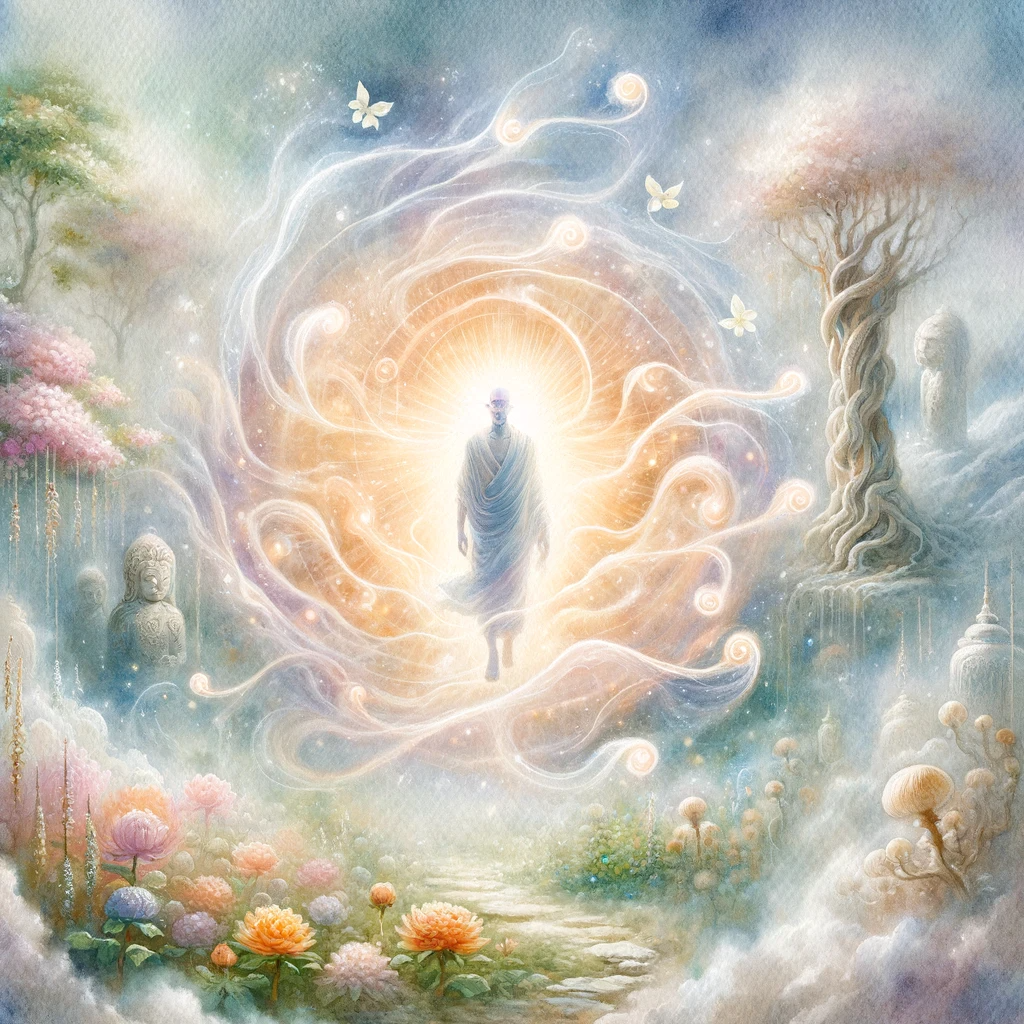
cross-posted from: https://lemmy.world/post/10571283
One by one,
little by little,
moment by moment,
a wise man should remove his own impurities,
as a smith removes his dross from silver.
- DhammaPada verse 239

cross-posted from: https://lemmy.world/post/10519722
The truth of Nibbāna is fundamental to the Buddha's teachings and also what one awakens to (stream entry) as well as the end goal of the teachings (arahantship). In this post, I will share an approach for cultivating faith in this goal by making a case for the verification of Nibbāna using recent modern science.
To understand the truth of Nibbāna, I will start out with a complete presentation of the four noble truths in a way that they can be apparent in the here and now with applied reflection. After this, I will make a case for the verification of Nibbāna via modern science, and at the very least, a strong signal that should move the needle towards cultivating faith for some of us that are on the fence. And perhaps, this can serve as a springboard for some of us to dedicate more of our time to gradually learn the teachings of the Buddha and independently verify the truth for ourselves, going beyond doubt.
The Four Noble Truths
1. The truth of discontentment: The feelings of each moment to moment experience are subject to discontentment. The form, perception, volitions, consciousness (together the five aggregates) of each moment to experience are subject to discontentment.
The First Noble Truth titled, “the noble truth of discontentedness”, establishes “the problem” with the unEnlightened mind through an understanding of The Five Aggregates.
The Five Aggregates are what makes “a being, a being”. A living being will have all five aggregates, also known as “elements” or “collections”.
The Five Aggregates
Form: the physical body.
Feelings: results of experiences in the mind through The Six Sense Bases.
Perceptions: a belief or opinion based on how things seem.
Volitional Formations: choices or decisions that are made.
Consciousness: the mind.
It is when the mind “clings” or “holds on” to The Five Aggregates that the mind experiences continued discontentedness. Observing the impermanent nature of The Five Aggregates, a human being can “let go” no longer experiencing discontentedness due to “holding on” to The Five Aggregates experiencing constant rebirth in The Cycle of Rebirth.
Due to clinging to The Five Aggregates and a being coming into existence, the mind will experience discontentedness.
All unEnlightened beings will experience discontentedness.
Let's take the feelings aggregate to verify this in the here and now: painful feelings such as anger, sadness, anxiety, frustration, ill-will, jealousy, or neither-painful-nor-pleasant feelings such as shyness, boredom, loneliness, discomfort, melancholy are subject to discontentment. However, the Buddha also shares that the pleasant feelings such as excitement, happiness, elation, thrill, euphoria etc. are no exceptions and also subject to discontentment. We can perhaps see the truth of this through the understanding of these conditioned pleasant feelings lacking permanence. Do you often think about that "peak experience" in your life? There you go, that's the verification of the first noble truth for the feelings aggregate. With some more reflection, this can be seen for the other aggregates too.
2. The truth of the cause of discontentment: It is the underlying craving for renewed existence, accompanied by desire or lust, seeking excitement here and there, that is craving for sensual pleasures, craving for existence and craving for extermination.
The second noble truth explains the underlying cause of why the mind experiences discontentedness.
It is craving/desire/attachment that causes the mind to experience discontentedness.
Craving/Desire/Attachment/Wants/Expectations/Grasping/Holding/Clinging: a mental longing for something with a strong eagerness. The mind pulling in a direction for objects of its affection.
The Buddha provides specific cravings that the unEnlightened mind will experience. It is “craving which leads to renewed existence”. Not only does craving cause discontentedness but craving is the fuel that leads to rebirth. If there is craving/desire/attachment in the mind, a being will experience rebirth.
The unEnlightened mind will seek pleasant feelings chasing after the objects of its affection. The Buddha explains this as craving that is “accompanied by excitement and desire, seeking excitement here and there; that is craving for sensual pleasures”. The unEnlightened mind will pull in the direction of the objects of its affection and if it gets what it “wants”, the mind experiences temporary pleasant feelings. If the mind does not get what it “wants”, it will experience painful feelings. Many times the mind does not know what it “wants” and will experience feelings that are neither painful-nor-pleasant.
Craving/desire/attachment keeps the mind in a continuous cycle of discontentedness never being able to find peace or be at ease because it is constantly chasing after something experiencing pleasant feelings, painful feelings, and feelings that are neither painful-nor-pleasant.
The Buddha further explains how the mind has “craving for existence” which is a mental longing with a strong eagerness to exist in the world. With the mind holding on to existence, a being will continue to experience discontentedness and discontentedness in future existences within The Cycle of Rebirth due to the craving/desire/attachment in the mind for continued existence. If there is birth, there is going to be discontentedness.
The mind also can have “craving for extermination” or death. This would be a being who is interested in death through suicide or other destructive conduct. If the mind has craving/desire to eliminate life, the mind is not in the middle and will experience discontentedness and rebirth due to this craving.
All craving/desire/attachment will produce discontentedness in the mind. There is no such thing as a wholesome craving/desire/attachment.
3. The truth of the cessation of discontentment: There is a cessation of discontentment. It is the remainderless fading away and elimination of the same craving, the giving up and letting go of it, freedom from it, non-reliance on it.
Through training the mind to eliminate mental longing with a strong eagerness, the mind can reside peaceful, calm, serene, and content with joy because it is no longer seeking pleasant feelings through impermanent conditions and, thus, welcoming in painful feelings and feelings that are neither painful-nor-pleasant. Instead, the mind is trained to be inwardly peaceful and content or “satisfied with what is”.
The Buddha explains the elimination of discontentedness as “it is the remainderless fading away and elimination of the same craving, the giving up and letting go of it, freedom from it, non-reliance on it”.
Through training the mind to eliminate craving/desire/attachment, the mind can reside peaceful, calm, serene, and content with joy - permanently. Through training the mind to no longer chase after the objects of its affection, it can find inner peace no longer experiencing conditioned temporary feelings that are unsatisfactory. Instead, the mind can experience unconditioned mental qualities such as peacefulness, calmness, serenity, and contentedness with joy.
The inner feelings of the Enlightened mind are not based on impermanent conditions but instead, the mind is always peaceful, calm, serene, and content with joy not based on temporary conditions. This is accomplished through training the mind to eliminate craving/desire/attachment as described in this entire book series.
Through training the mind in this way, the mind can eliminate 100% of all discontent feelings.
4. The truth of the way of cessation of discontentment: It is the noble eight fold path: namely right view, right intention, right speech, right action, right livelihood, right effort, right mindfulness, and right concentration is the way that leads to the cessation of discontentment.
This last noble truth shows the path to verify the third truth. It is The Eight Fold Path that provides the complete and perfect solution for how to actively train the mind to eliminate 100% of all discontentedness. While craving/desire/attachment is the cause of the problem and the solution to eliminate discontentedness is to eliminate all craving/desire/attachment, there is an entire path one needs to learn, reflect on, and practice to liberate the mind from discontentedness.
The Buddha explains this as “it is this Noble Eight Fold Path, that is, Right View, Right Intention, Right Speech, Right Action, Right Livelihood, Right Effort, Right Mindfulness, Right Concentration”.
The Four Noble Truths is the primary core Teaching that establishes Right View helping a Practitioner to examine the problem, cause of the problem, solution to the problem, and the path leading to the complete elimination of the problem. It is The Eight Fold Path that is the central Teaching of The Buddha with the vast majority of his Teachings integrating into The Eight Fold Path in one way or another.
It is through learning, reflecting, and practicing The Eight Fold Path that the mind is trained to be able to completely eliminate all unwholesome decisions that motivate unskillful conduct that leads to unwholesome results. Through training the mind in The Eight Fold Path, it is transformed into making only wholesome decisions that motivate skillful conduct that leads to wholesome results.
Verifying in the here and now
The first two truths can become readily apparent in the here and now or with some reflection on your experiences. However, verifying the cessation of discontentment requires building a life practice of the noble eightfold path. You can verify the 3rd truth by way of verifying the 4th truth, and this typically requires one to commit to building a life practice. Depending on how much farther our current life routine is from the Buddha's prescribed way of being in the Noble eightfold path, setting out to verify the 3rd and 4th noble truths may require a stronger faith than we currently hold -- to commit ourselves to doing the necessary work.
In this post, I'm sharing another way to verify the 3rd noble truth -- through the mode of science. The verification / demonstration is of the same quality as the one we hold in Einstein's (E = mc²) equation being true while not having to chance to verify it on our own. While science did not exist during the time of the Buddha 2500 years ago, the Buddha emphasized on the discovery of truth via a reasoned critical inquiry, vy direct observation and independent verification, in much the same way that modern science advocates for. You can read his exact words and teaching on the topic of truth over here: https://www.reddit.com/r/WordsOfTheBuddha/comments/1893o1o/canki_sutta_preservation_of_truth_awakening_to/.
The Buddha also had a clear position on what are insufficient grounds for building faith. He shares 10 conditions that one shouldn't rely on for the discovery of truth. You can read his exact words and teaching in this post: https://www.reddit.com/r/WordsOfTheBuddha/comments/18adf05/kalama_sutta_importance_of_inquiry_and_personal/.
Verifying The Noble Truth of Cessation with Modern Science
Coming to Modern science: being this democratic body of work that allows for universal participation for the discovery of new truths, building on them, allowing for course correction, and being based in empiricism - has emerged as a strong currency for truth in the last five centuries. The science a kid living in Middle East studies is the same science that the rest of the world studies.
As Carl Sagan puts it:
"Science is a way of thinking much more than it is a body of knowledge."
The Science of Cessation
A paper published in April 2023 documents a subject demonstrating cessation of perception and feeling for a duration of 90 minutes under the bright lights of a modern science lab. The subject undergoes consciously shutting down their mind and self to a state where they experience no thoughts or feelings and can't be woken up from akin to an anesthesia. Except the meditator can consciously induce it and with training, stay in this state for a pre-determined duration lasting up to 7 days. This physically observable characteristic makes it possible to study this state and human physiology scientifically.
Here is the link to the paper https://pubmed.ncbi.nlm.nih.gov/37714573/ + https://www.sciencedirect.com/science/article/abs/pii/S0079612322001984?dgcid=rss_sd_all. This and other recent research studies are opening a gateway to help humanity better understand the science of consciousness and brain.
Here is a video conversation with the subject of the study and the scientist who was part of the research team conducting the experiment explaining the details of the study and its implications: https://www.youtube.com/watch?v=OIEWAerJKOs.
Nirodha Samapatti and the Noble Truth of Cessation of Discontentment
Now, Nirodha Samapatti also known as cessation of perception and feeling is a well-described state in the early Buddhist texts in Pali canon.
Here is a sutta describing the state of cessation of perception and feeling, which is a factor of liberation: https://suttacentral.net/an9.47/en/sujato.
Furthermore, take a mendicant who, going totally beyond the dimension of neither perception nor non-perception, enters and remains in the cessation of perception and feeling. And, having seen with wisdom, their defilements come to an end. To this extent the Buddha said that extinguishment is apparent in the present life in a definitive sense.”
The Buddha shares this as a definitive way to confirm that extinguishment is reached in present life.
There is another sutta describing the state of cessation of perception and feeling in a correspondence between Venerable Mahākoṭṭhita and Venerable Sāriputta: https://suttacentral.net/mn43/en/sujato.
“What’s the difference between someone who has passed away and a mendicant who has attained the cessation of perception and feeling?” This distinction is critical, as it sometimes happens that a person in deep meditation seems as if dead.
"When someone dies, their physical, verbal, and mental processes have ceased and stilled; their vitality is spent; their warmth is dissipated; and their faculties have disintegrated. When a mendicant has attained the cessation of perception and feeling, their physical, verbal, and mental processes have ceased and stilled. But their vitality is not spent; their warmth is not dissipated; and their faculties are very clear. That’s the difference between someone who has passed away and a mendicant who has attained the cessation of perception and feeling.”
It is noted that a meditator can stay in the state of Nirodha Samapatti for up to 7 days and come back.
While Nirodha Samapatti is a definitive way to confirm the extinguishment of Nibbāna is reached, it is not a necessary attainment for one to reach Nibbāna. It is described as one of the eight liberations in another sutta, DN 16 https://suttacentral.net/dn16/en/sujato
Ānanda, there are these eight liberations. What eight?
Having physical form, they see forms. This is the first liberation.
Not perceiving form internally, they see forms externally. This is the second liberation.
They’re focused only on beauty. This is the third liberation.
Going totally beyond perceptions of form, with the ending of perceptions of impingement, not focusing on perceptions of diversity, aware that ‘space is infinite’, they enter and remain in the dimension of infinite space. This is the fourth liberation.
Going totally beyond the dimension of infinite space, aware that ‘consciousness is infinite’, they enter and remain in the dimension of infinite consciousness. This is the fifth liberation.
Going totally beyond the dimension of infinite consciousness, aware that ‘there is nothing at all’, they enter and remain in the dimension of nothingness. This is the sixth liberation.
Going totally beyond the dimension of nothingness, they enter and remain in the dimension of neither perception nor non-perception. This is the seventh liberation.
Going totally beyond the dimension of neither perception nor non-perception, they enter and remain in the cessation of perception and feeling. This is the eighth liberation.
These are the eight liberations.
--------
Thank you for reading the entire way. Or if you've come here directly, here's the needle in the haystack about how modern science can verify the truth of the existence of Nibbāna through a study of a subject who attained to Nirodha Samapatti under the bright bright lights of a science lab and allowed scientists to wire his brain like a christmas tree: https://www.youtube.com/watch?v=OIEWAerJKOs.
Once you've digested and verified the state of Nirodha Samapatti and the associated research, perhaps you may decide to learn the teachings of the Buddha to independently verify the truth in them.
You may be interested in checking this post next on the factors of cultivating faith: https://www.reddit.com/r/WordsOfTheBuddha/comments/189qyul/cultivating_faith_to_awaken_to_the_truth_sn_5555/

7 Why We Suffer
WHEN WE LOOK deeply at the nature of things, we see that in fact everything is impermanent. Nothing exists as a permanent entity; everything changes. It is said that we cannot step into the same river twice. If we look for a single, permanent entity in a river, we will not find it. The same is true of our physical body. There is no such thing as a self, no absolute, permanent entity to be found in the element we call "body." In our ignorance we believe that there is a permanent entity in us, and our pain and suffering manifest on the basis of that ignorance. If we touch deeply the nonself nature in us, we can get out of that suffering.
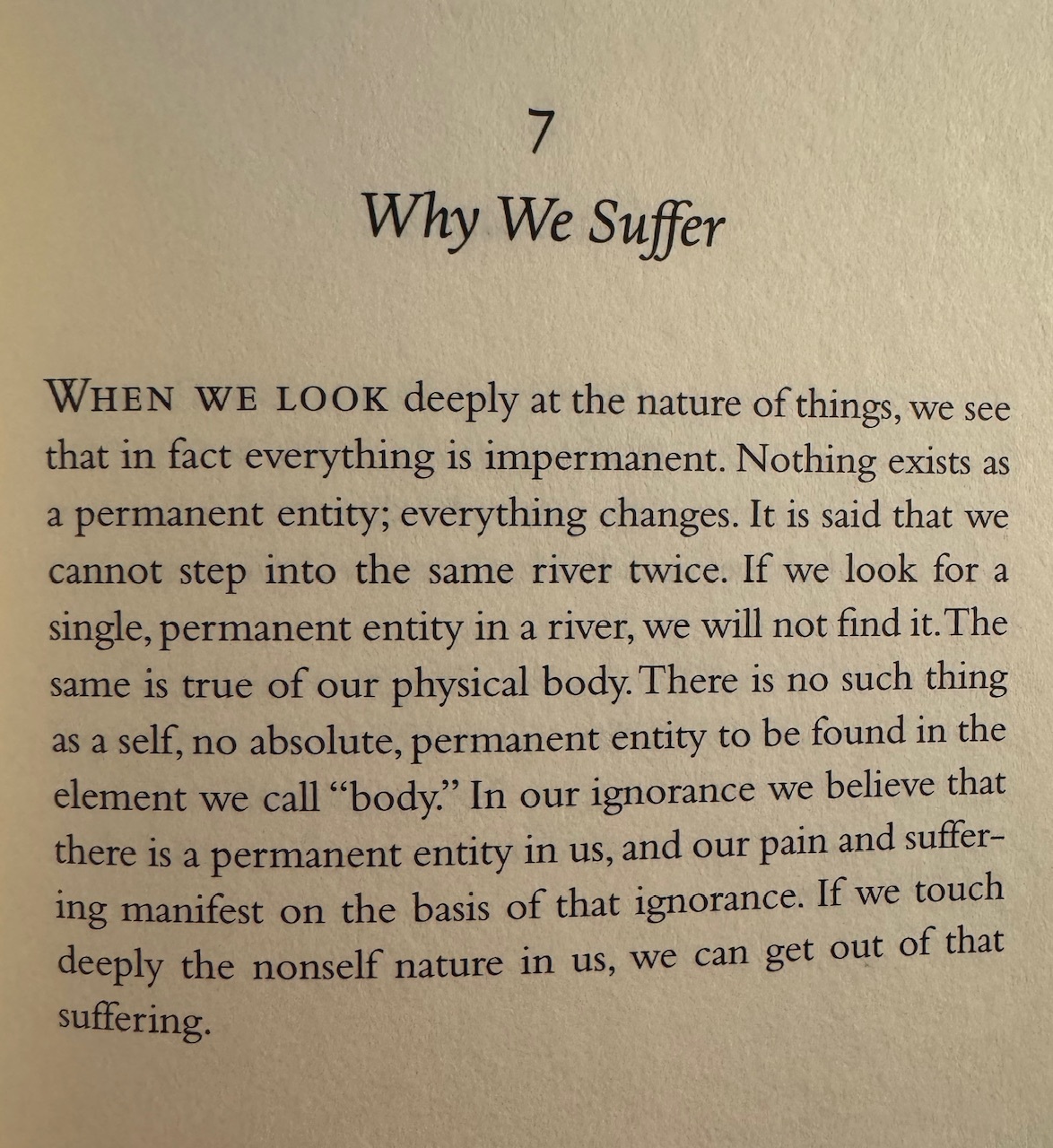
365 This Is the Revolution WE HAVE TO wake up! We have to make it possible for the moment of awareness to manifest. This is the practice that will save us this is the revolution.
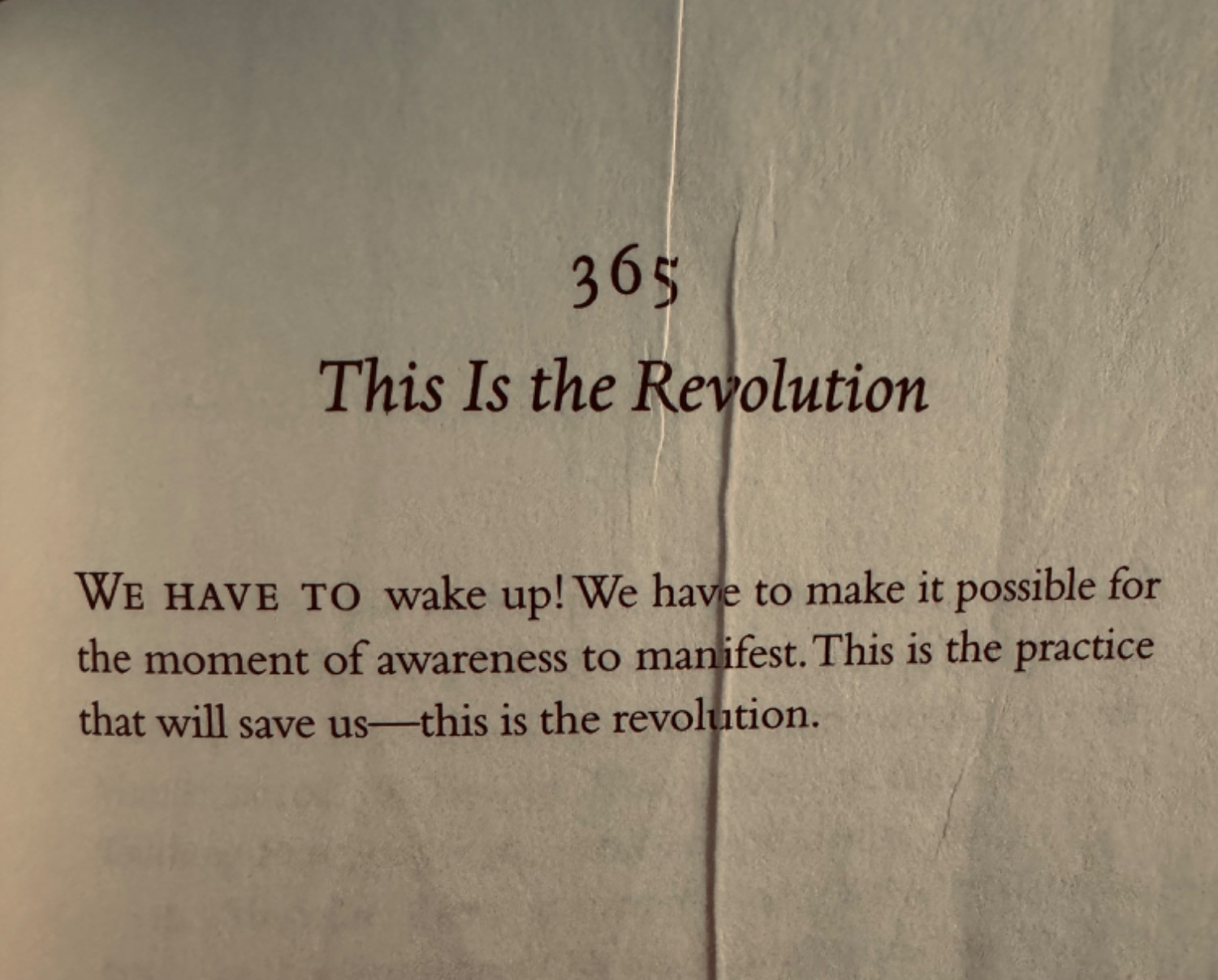
346 What Separates Us
WE ARE SEPARATED BY LABELS, by words like Israeli, Palestinian, Buddhist, Jew, and Muslim. When we hear one of these words it evokes an image, and we immediately feel alienated from the other group or person. We've set up many habitual ways of thinking that separate us from each other, and we make each other suffer.
People are caught in these notions and images, and they cannot recognize each other as human beings. The practice of peeling away all the labels so that the human being can be revealed is truly a practice for peace.

333 Recognizing Negative Energy
NEGATIVE HABIT energy always tries to emerge, but if you are mindful, you recognize it. Mindfulness helps us to recognize the habits transmitted by our ancestors and par-ents, or learned during our childhood. Often, just recognizing these habits will make them lose their hold on you.
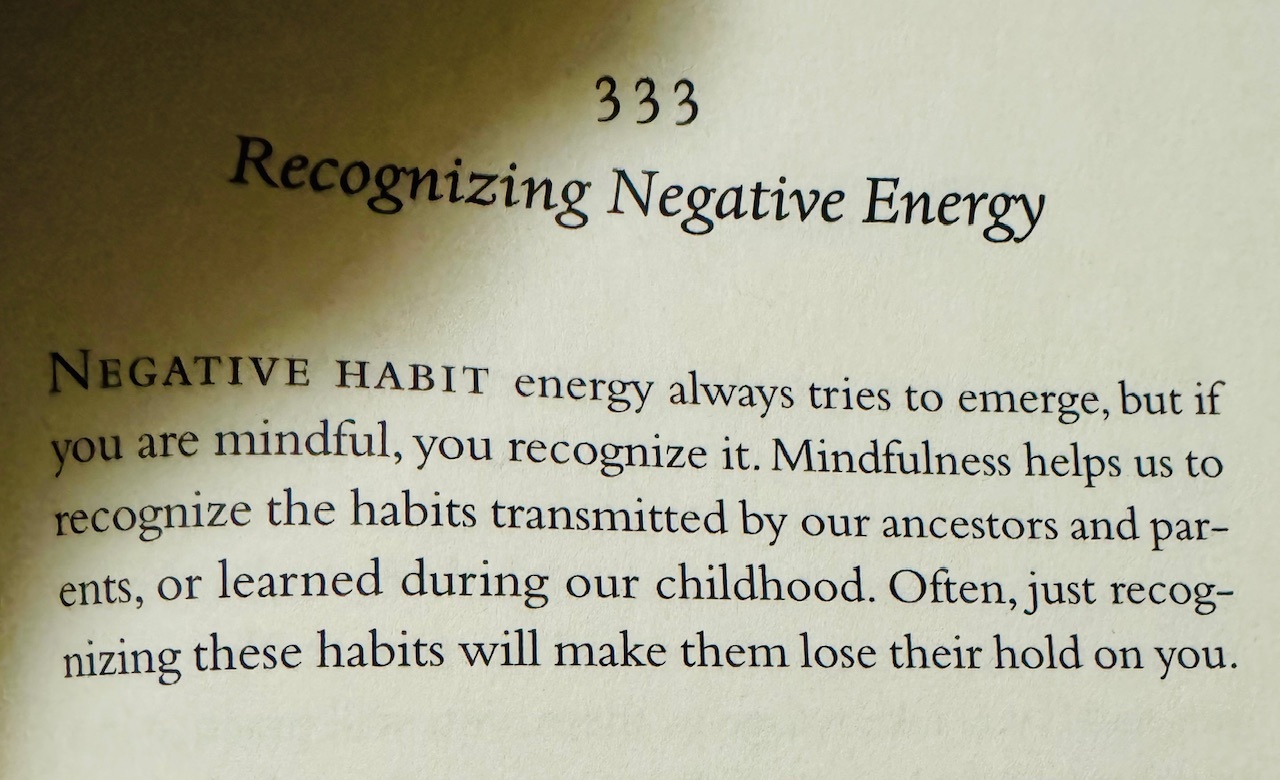
326 Equanimity TRUE LOVE DOES not just choose one person. When true love is there, you shine like a lamp. You don't just shine on one person in the room. That light you emit is for everyone in the room. If you really have love in you, everyone around you will benefit—not only humans, but animals, plants, and minerals. Love, true love, is that. True love is equanimity.
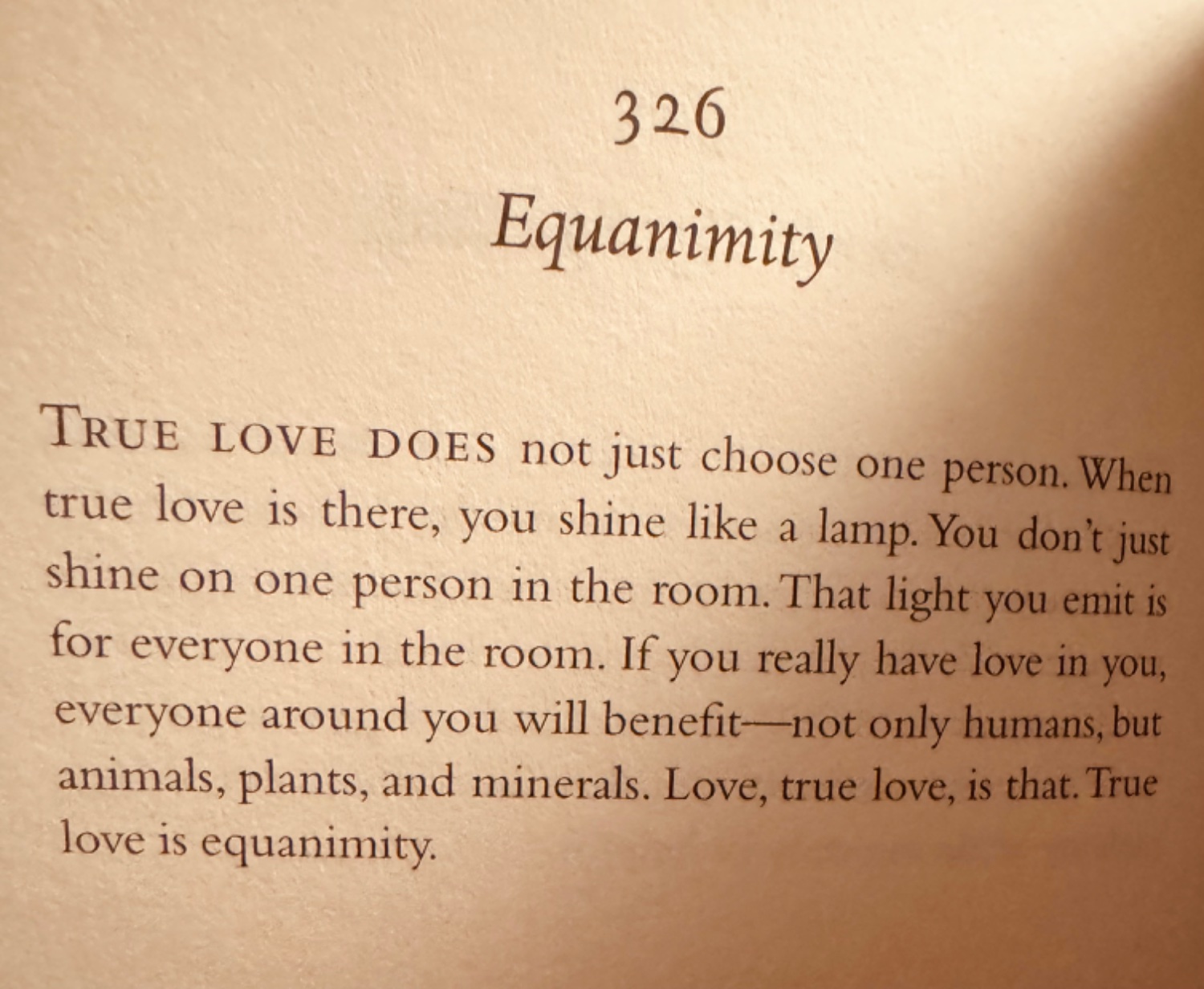
THE BUDDHA HAD a special way to help us understand the object of our perception. He said that in order to understand, you have to be one with what you want to understand. In the Satipatthana Sutta, the basic manual on meditation from the time of the Buddha, it is recorded, "The practitioner will have to contemplate body in the body, feelings in the feelings, mind in the mind, objects of mind in the objects of mind." The words are clear. The repetition "body in the body" is not just to underline the importance of it. "Contem-plating body in the body" means that you do not stand outside of something to contemplate it. You must be one with it, with no distinction between the contemplator and the contemplated. "Contemplating body in the body" means that you should not look on your body as the object of your contemplation. You have to be one with it. The message is clear. Nonduality is the key word for Buddhist meditation.
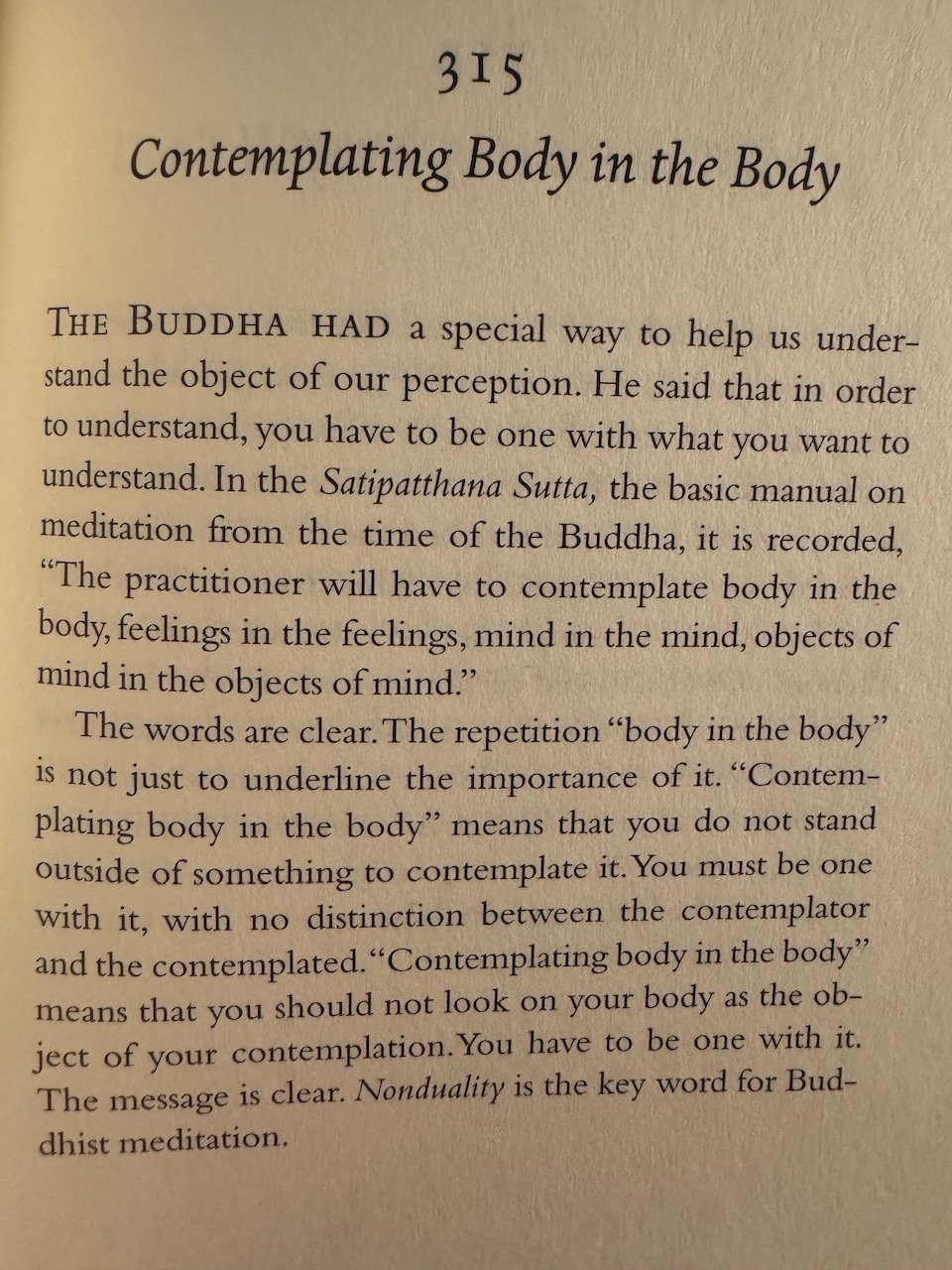
This is no doubt a massive butchery of the original quote, taken from my memory of the book "The Buddha, Geoff and Me", but I hope the sentiment carries through regardless.
Every day, the Buddha would walk through town. While walking, he would pass a man, who deeply despised the Buddha and everything he stood for. He would hurl insults at the Buddha, the most vile and reprehensible accusations. Every day, the Buddha would just nod and smile towards the man, then carry on his walk. Every day, the man would say the worst thing he could think of.
One day, the man did not say anything horrible. He stood in front of the Buddha, stopping him, and asked him, "I say all these things to you every day, why don't you react? Do you not understand how much I think you're a horrible person?"
The Buddha replied, after a moment, "If I gave you a gift, would you accept it?"
The man said, "No, of course not. You're the worst, I wouldn't accept anything from you."
"Then who would the gift belong to, would it be yours?"
"No, it's not mine, you have to keep it!"
The Buddha replied: "Such is the way with your anger. If I do not accept it, then it belongs to you, and you alone."
Buddhism
A community for Buddhism.
Other subs
- c/buddhism
- c/zen
- c/alcoholicbuddhists
- c/buddhistaddicts
- c/zen
- c/theravada
- c/pureland
- c/tibetanbuddhism
- c/buddhiststudies
- c/vajrayana>


